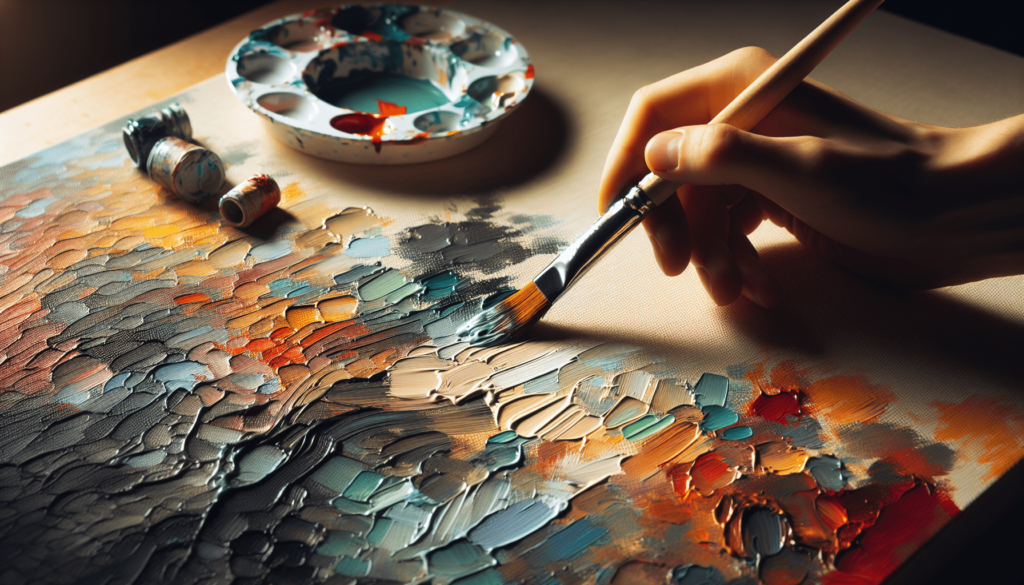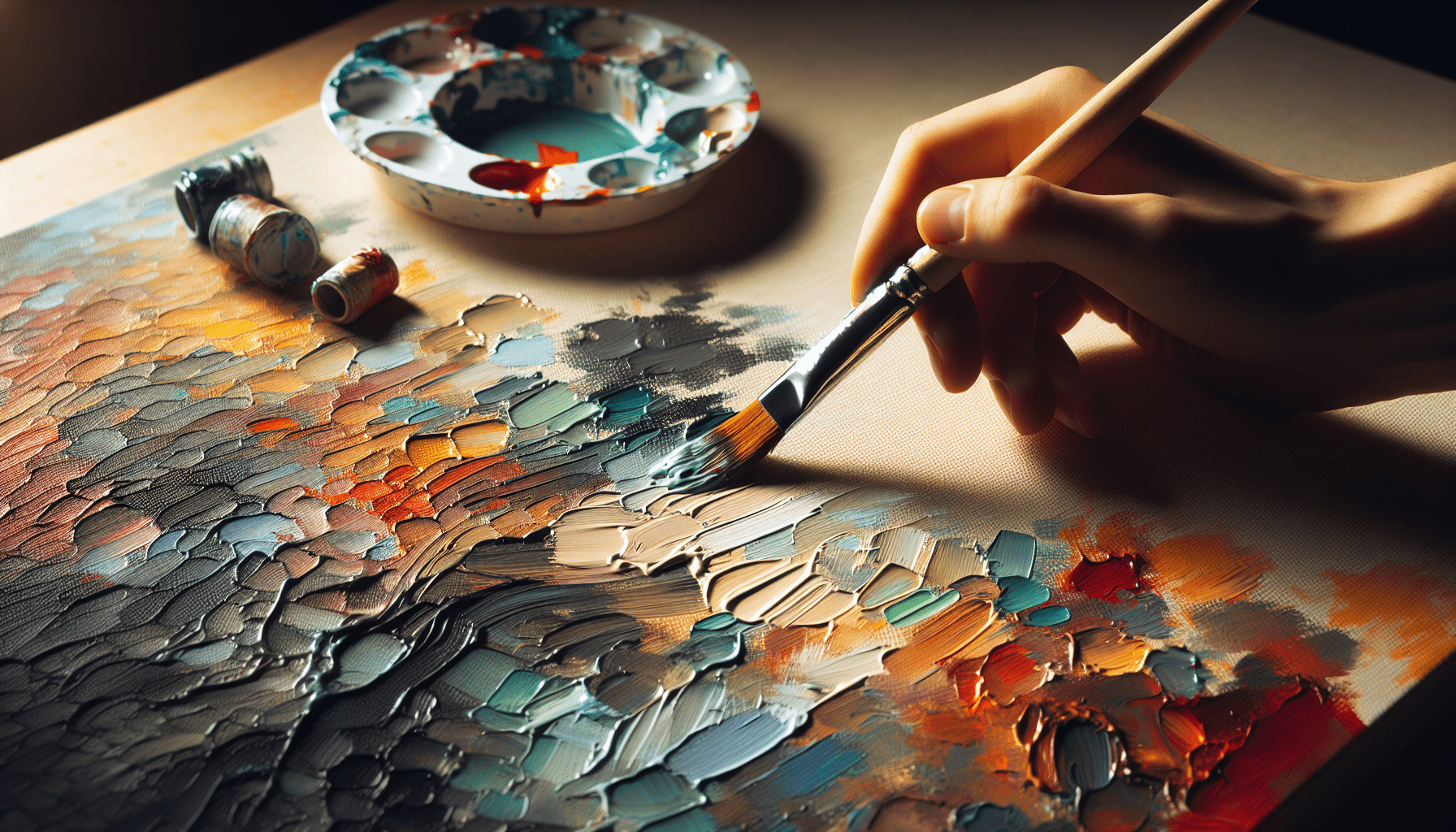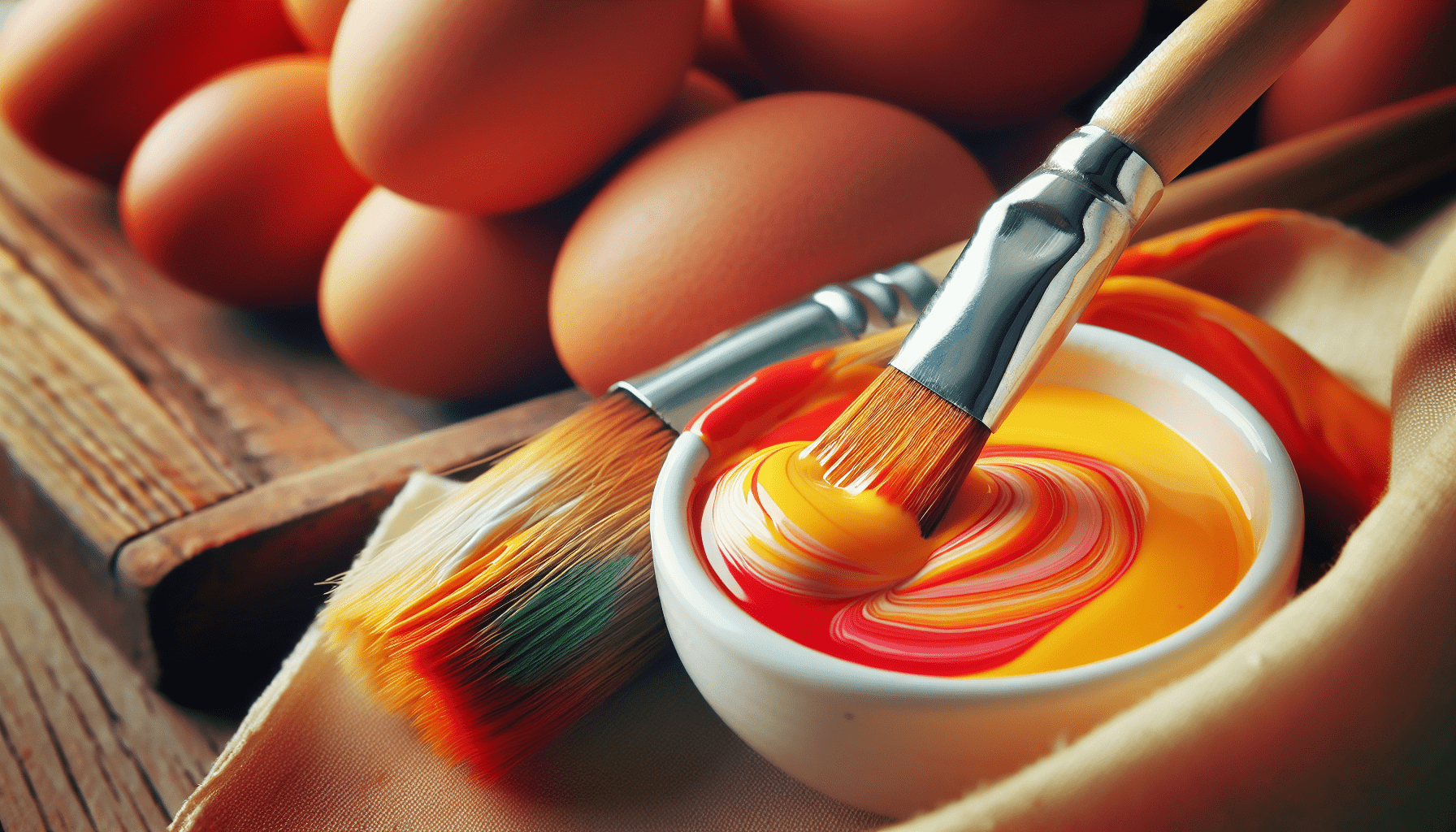Tempera paint is a popular choice for artists due to its vibrant colors and smooth application. However, when it comes to painting on canvas, many artists are unsure if tempera paint is a suitable medium. In this article, we will explore the possibilities of using tempera paint on canvas, considering factors such as durability, color blending, and potential challenges. By delving into the unique characteristics of tempera paint and its compatibility with canvas, we aim to provide you with valuable insights and guidance for your artistic endeavors.
Introduction
Tempera paint has been a popular medium for centuries, known for its vibrant colors and versatility. While traditionally used on wood panels, many artists have wondered if tempera paint can be used on canvas. In this comprehensive article, we will explore the world of tempera paint and canvas, discussing the definition, composition, and properties of tempera paint, as well as the advantages and disadvantages of using it on canvas. We will also delve into the techniques and considerations involved in using tempera paint on canvas, including canvas preparation, application techniques, fixing and sealing methods, as well as challenges and considerations to keep in mind. Finally, we will provide guidance on the proper storage and maintenance of tempera paintings on canvas. Let’s dive in and explore the exciting possibilities of using tempera paint on canvas!
Understanding Tempera Paint
Definition of Tempera Paint
Tempera paint, also known as egg tempera, is a type of painting medium that consists of a pigment, a binding agent, and water. Its key characteristic is the use of egg yolk as the binding agent, which gives tempera paint its unique properties. The egg yolk serves as a natural emulsifier, allowing the pigment particles to mix with water and create a smooth and durable paint. This paint dries quickly, leaving a matte finish and a distinctive luminosity.
Composition and Properties of Tempera Paint
Tempera paint is typically made by mixing dry pigments with egg yolk and small amounts of water. The egg yolk acts as a stabilizer, preventing the pigments from separating or clumping together. The addition of water facilitates the flow and application of the paint. Some artists may also use other binding agents, such as gum or casein, to modify the properties of tempera paint.
One of the key properties of tempera paint is its opacity. It has excellent covering power, allowing artists to create solid and opaque layers of color. This makes it ideal for detailed and precise work, as well as for creating vibrant and bold compositions.
Tempera paint also has a relatively quick drying time, which enables artists to build layers and work in a systematic manner. It dries to a matte finish, giving the painting a soft and velvety appearance. This finish can be further enhanced or altered by various techniques and surface treatments.
Advantages and Disadvantages of Tempera Paint
Using tempera paint on canvas offers several advantages. Firstly, tempera paint provides excellent color vibrancy and accuracy, allowing artists to achieve precise color matching and intricate details. The paint also has a long history of durability, with many tempera paintings from centuries ago still retaining their vibrancy and integrity. Additionally, tempera paint dries quickly, enabling artists to work in layers and make corrections or adjustments more easily. Its matte finish provides a unique visual quality that can enhance certain subject matters and artistic styles.
However, tempera paint does have some limitations when used on canvas. Since it dries quickly, blending and subtle transitions between colors can be more challenging compared to other painting mediums. Furthermore, tempera paint is not as flexible as oil paint, which can make it prone to cracking and flaking on canvas if not handled and stored properly. Another consideration is the potential for color fading and discoloration over time, as some pigments may be more susceptible to these effects than others. Despite these limitations, tempera paint can still be an excellent choice for canvas paintings when used with proper preparation and techniques.

Canvas as a Painting Surface
Definition of Canvas
Canvas is a popular painting surface that has been used by artists for centuries. It is traditionally made from tightly woven linen or cotton fabric, stretched and secured to a wooden frame. Canvas provides a stable and durable foundation for paintings, allowing artists to work with various painting techniques, styles, and mediums.
Types of Canvas
There are different types of canvas available, each with its own characteristics and suitability for different artistic needs. The two main types of canvas are linen and cotton. Linen canvas is considered the superior choice due to its strength and longevity. It has a tight weave and a smooth surface, allowing for fine details and precise brushwork. Cotton canvas, on the other hand, is more affordable and widely used. It has a slightly coarser texture, which can add a subtle grain pattern to the finished painting. Both linen and cotton canvases come in a variety of weights and grades, offering artists options to suit their preferences and artistic requirements.
Suitability of Canvas for Different Painting Techniques
Canvas is a versatile surface that can accommodate various painting techniques. Its fibrous texture allows paint to adhere well and provides a slightly absorbent surface, which can be advantageous for certain techniques such as glazing or scumbling. Canvas is also flexible, making it easier to stretch and frame artworks. Furthermore, it can handle various mediums, including acrylics, oils, and even tempera paint. While tempera paint is traditionally associated with wood panels, using it on canvas opens up new possibilities for artists to explore the unique qualities of this medium on a different surface.
Tempera Paint on Canvas
Historical Usage of Tempera Paint on Canvas
Tempera paint has a rich history dating back to ancient civilizations, where it was commonly used on wood panels. However, there is evidence to suggest that tempera paint was also applied on canvas during certain periods, such as the Renaissance. Artists like Sandro Botticelli and Fra Angelico are known to have used tempera paint on canvas to create their masterpieces. These artworks exemplify the compatibility of tempera paint and canvas, demonstrating the effectiveness of this combination in capturing intricate details and achieving a luminous quality.
Modern Application of Tempera Paint on Canvas
In contemporary art practice, tempera paint on canvas is experiencing a resurgence in popularity. Artists are embracing the versatility and unique characteristics of tempera paint, exploring its potential on different surfaces. Canvas provides a suitable ground for tempera paint, allowing artists to combine the historical techniques of tempera with the vibrancy and expressiveness of canvas. This modern application of tempera paint on canvas opens up a new realm of artistic possibilities, where traditional methods meet contemporary creativity.

Preparing Canvas for Tempera Paint
Canvas Priming
Before applying tempera paint, it is essential to prepare the canvas properly. Priming the canvas creates a smoother and more stable surface, enhancing the adhesion and longevity of the paint. There are various priming options available, including acrylic gesso, rabbit skin glue, or traditional chalk ground. Acrylic gesso is a popular choice due to its flexibility, compatibility with tempera paint, and ease of use. It creates a white, toothed surface that allows the paint to grip and adhere effectively.
Sizing Canvas
Sizing refers to the process of sealing the canvas fibers to prevent excessive absorption of moisture from the paint layers. This step is crucial when using tempera paint on canvas, as the quick-drying nature of tempera can cause the canvas to absorb the paint rapidly, hindering color manipulation and layering. Sizing can be accomplished using a sizing gel or a suitable adhesive. It forms a barrier between the canvas and the paint, facilitating more control over the painting process and optimizing the performance of tempera paint.
Gesso Application
Gesso is a versatile substance used to prepare the canvas surface for painting. It acts as a barrier between the canvas and the paint, improving adhesion and preventing the paint from sinking into the fabric. Gesso can be applied in multiple layers, allowing artists to achieve the desired texture and absorbency. When using tempera paint on canvas, applying gesso can help create an optimal working surface, enabling smooth brushwork and enhancing color brilliance.
Application Techniques for Tempera Paint on Canvas
Brushwork
Brushwork is a fundamental technique in painting, and it plays an essential role when working with tempera paint on canvas. The use of brushes allows artists to control the application of paint, creating different textures and effects. When using tempera paint, it is important to choose brushes suitable for the medium. Natural hair brushes, such as sable or hog bristle, work well with tempera paint as they provide the desired control and responsiveness. Proper brush handling and stroke techniques can help achieve the desired level of detail and precision required in tempera paintings.
Layering and Glazing
Layering and glazing are techniques often employed in tempera painting to build up colors and create depth. Layering involves applying multiple thin layers of paint, allowing each layer to dry before adding the next. This technique enables artists to achieve luminosity and subtlety in their paintings. Glazing, on the other hand, involves applying transparent or translucent layers of paint over dry underlayers. This technique enhances color saturation and creates a rich, glowing effect. Both layering and glazing techniques work well with tempera paint on canvas, enabling artists to create intricate and nuanced compositions.
Scumbling and Dry Brushing
Scumbling and dry brushing are techniques that can add texture and visual interest to tempera paintings on canvas. Scumbling involves applying a partially dry brush loaded with paint over a dry surface, creating a broken and textured effect. Dry brushing, on the other hand, involves using a brush with very little paint, allowing the texture of the canvas to show through. These techniques work particularly well on canvas due to its fibrous nature, allowing artists to exploit the rough texture and weave pattern to achieve unique effects.
Impasto Techniques
Impasto techniques involve applying thick layers of paint to create texture and three-dimensional effects. While tempera paint is not typically associated with impasto techniques, artists can experiment with adding texture to their tempera paintings on canvas. By mixing additives, such as marble or pumice dust, into the tempera paint, artists can create impasto-like effects. However, it is important to note that tempera paint is not as structurally flexible as oil paint, so any impasto techniques should be applied with caution to ensure the longevity and integrity of the artwork.
Fixing and Sealing Tempera Paint on Canvas
Types of Fixatives and Sealants
Fixatives and sealants are used to protect the finished tempera painting and ensure its longevity. They help fix the paint layers in place and provide a protective barrier against dust, dirt, moisture, and UV radiation. There are various types of fixatives and sealants available, including spray-on varnishes, resin-based solutions, and archival wax. Each type has its own characteristics and suitability for different artistic preferences and conservation requirements.
Application Methods for Fixatives and Sealants
When applying fixatives or sealants to a tempera painting on canvas, it is essential to follow proper application methods to achieve the best results. Clean the painting surface thoroughly, ensuring it is free from dust and debris. Apply the fixative or sealant in thin, even coats, allowing each layer to dry completely before applying the next. Use gentle and uniform strokes to avoid streaks or uneven distribution. It is also important to ensure proper ventilation and follow safety precautions when working with fixatives and sealants to maintain a professional standard of care.
Challenges and Considerations
Durability and Longevity
While tempera paint has a long history of durability, using it on canvas can present certain challenges to its longevity. Canvas, being a flexible material, can undergo stretching and contraction with changes in humidity, which can affect the stability of the paint layers. Tempera paint itself can be prone to cracking and flaking if not handled or stored properly. To ensure the durability and longevity of a tempera painting on canvas, it is crucial to use archival-quality materials, adequately prepare the canvas, and follow proper storage and maintenance practices.
Handling and Transporting
Tempera paintings on canvas require careful handling and transport to prevent any damage or deterioration. The canvas should be securely stretched and framed to protect it from accidental impact or bending. Avoid touching the painting surface directly, as the natural oils and moisture from the skin can affect the paint and surface over time. When transporting a tempera painting on canvas, it should be properly wrapped and protected to prevent any scratches, moisture exposure, or sudden temperature changes that could potentially harm the artwork.
Color Fading and Discoloration
Color fading and discoloration can be a concern with tempera paint on canvas, as certain pigments may undergo light-induced chemical reactions or be more susceptible to fading over time. It is important to use high-quality pigments and choose those with proven lightfastness ratings to minimize the risk of color shifts or fading. Additionally, protecting the painting from prolonged exposure to direct sunlight or harsh lighting conditions can help preserve the vibrancy and integrity of the colors over the years. Proper storage, as we will discuss later, is also crucial in minimizing color fading and discoloration.
Storage and Maintenance of Tempera Paint on Canvas
Proper Storage of Tempera Paintings
Proper storage is essential to ensure the preservation and longevity of tempera paintings on canvas. Ideally, tempera paintings should be stored in a controlled environment with stable temperature and humidity levels. They should be protected from direct sunlight, extreme heat or cold, and fluctuations in environmental conditions. When storing tempera paintings on canvas, it is important to avoid stacking or leaning them against each other, as this can cause pressure points and potential damage to the paint layers. Instead, paintings should be stored vertically, with sufficient spacing between them to maintain proper air circulation.
Cleaning and Maintaining Tempera Paintings
Regular cleaning and maintenance are crucial to keep tempera paintings on canvas in optimal condition. Use a soft, lint-free cloth or brush to gently remove any dust or surface debris. Avoid using excessive pressure or harsh cleaning agents, as these can damage the delicate paint layers. If necessary, cleaning can be done using a small amount of distilled water on a soft cloth, taking care to avoid letting the water seep into the canvas. As with any valuable artwork, it is recommended to consult a professional conservator for specific cleaning and maintenance guidance, especially for older or historically significant tempera paintings on canvas.
Conclusion
In conclusion, tempera paint can indeed be used on canvas, offering artists a versatile and unique medium to explore their creativity. By understanding the definition, composition, and properties of tempera paint, as well as the merits and considerations of using it on canvas, artists can fully appreciate the exciting possibilities this combination presents. With proper canvas preparation, application techniques, fixing methods, and storage practices, artists can ensure the durability, vibrancy, and longevity of their tempera paintings on canvas. By embracing the historical legacy of tempera paint and utilizing the modern advancements in materials and techniques, artists can create captivating and enduring artworks that showcase the beauty and versatility of this remarkable medium. So go ahead, grab your brushes, mix your pigments, and let the canvas be a new frontier for your tempera artistic endeavors!



